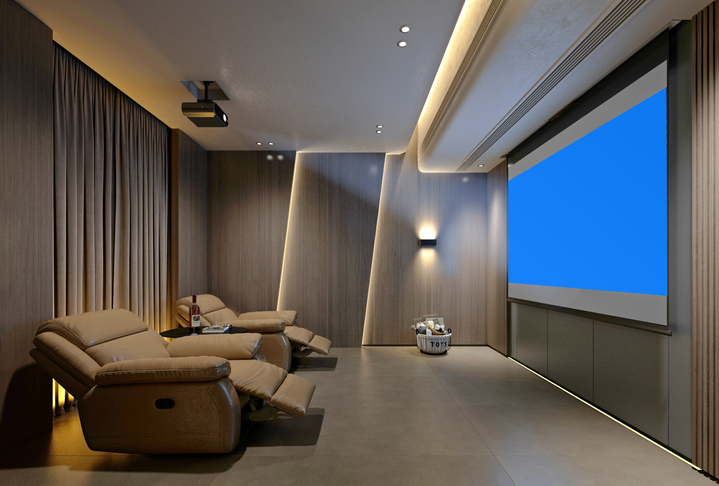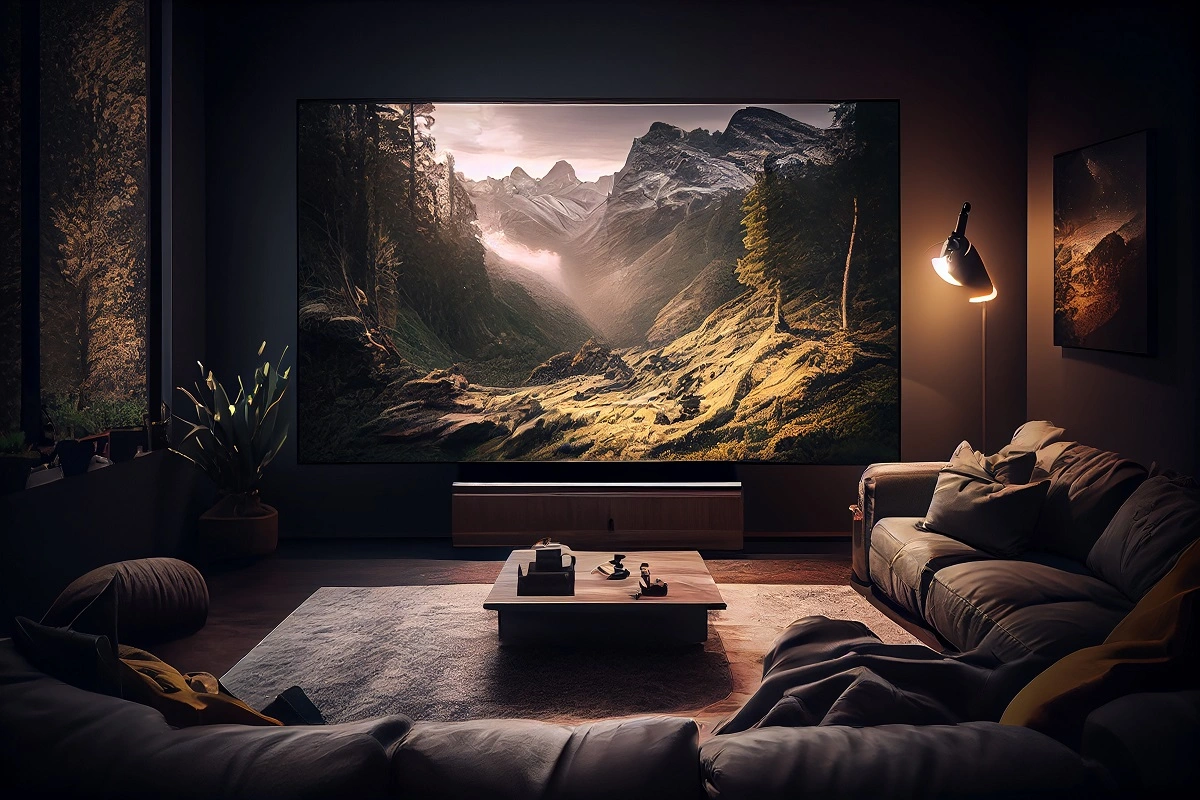Expert Home Theater Tampa Ideas for All Budgets
Expert Home Theater Tampa Ideas for All Budgets
Blog Article
Home Theater 101: Whatever You Need to Know for a Motion Picture Experience in the house
Developing a home cinema that measures up to the cinematic experience of a commercial theater entails careful consideration of several components, including screen choice, audio systems, and space layout. Whether you are considering the excellent display size or the details of border sound, comprehending these basics is essential.
Choosing the Right Screen
When setting up a home theater, selecting the ideal display can make or break the viewing experience - home theater tampa. The screen functions as the centerpiece of your arrangement, affecting picture top quality, viewing angles, and total visual. Secret factors to consider include display dimension, resolution, and type
First, determine the suitable screen dimension based on your area measurements and seating distance. A general standard is to rest approximately 1.5 to 2.5 times the angled screen dimension for optimum watching. Next, pick in between numerous display kinds, such as fixed-frame, mechanized, or retractable displays, each offering distinctive advantages. Fixed-frame displays usually offer the finest photo high quality, while motorized choices permit versatility precede usage.
Resolution is one more crucial aspect. For a truly immersive experience, consider a screen developed for 4K or perhaps 8K content, making certain intensity and quality. Additionally, think about the screen's gain, which impacts illumination and contrast; a greater gain can enhance brightness in well-lit spaces, while a lower gain might be better for darker environments.
Choosing Sound Equipment
Audio equipment is a crucial part of any type of home theater system, substantially enhancing the total watching experience. The choice of audio equipment can figure out the deepness, clearness, and immersion of sound, critical for producing a motion picture environment.
When choosing audio devices, consider a surround sound system, which normally consists of a receiver, several speakers, and a speaker. A 5.1 or 7.1 network system is recommended, where the first number stands for the speakers and the second the speaker, providing an immersive soundscape. The receiver is the heart of the system, managing audio and video clip signals, and need to sustain modern styles like Dolby Atmos for an improved spatial experience.
Quality speakers are vital; search for models that supply a well balanced noise account with excellent bass feedback. Floor-standing audio speakers can produce richer audio, while bookshelf options conserve room. In addition, consider cordless options for convenience of installation, although wired systems frequently provide superior performance.

Optimum Seating Plans
Creating a suitable home cinema experience hinges considerably on optimal seating arrangements. The arrangement of seats plays a critical duty in both convenience and seeing top quality, straight influencing the overall cinematic experience.
First, take into consideration the screen dimension and seeing distance. A common standard is to place seats at a distance roughly 1.5 to 2.5 times the angled size of the screen. This makes certain an immersive experience without straining the eyes.
Following, altitude is their explanation critical. The back rows ought to be higher than the front to avoid blockages if your seats is in a tiered style. For flat seats, guarantee that the front row is not as well close to the display, and that every person has a clear line of vision.
Furthermore, consider the setup in terms of social characteristics. Team seating can enhance the common experience, while specific seats might be preferred for individual viewing.

Last but not least, prioritize convenience with ergonomic seating that sustains prolonged watching periods. Integrating recliners or supported seats can substantially boost the experience, making the home theater a recommended location for both entertainment and leisure.
Lighting and Setting
Effective lights and ambiance are necessary parts of a well-designed home cinema, as they considerably affect the viewing experience. The appropriate lighting can improve the motion picture feeling, while bad selections can detract from it. For optimal results, think about a layered lighting method that consists of ambient, job, and accent illumination.
Ambient illumination supplies basic lighting, guaranteeing that the room is not entirely dark, which can stress the eyes. Dimmer buttons are extremely suggested, permitting changes based upon the web content being seen. Task illumination, such as wall sconces or flooring lights, offers functional illumination for activities like analysis or browsing the room without disrupting the general environment.
Accent illumination can be made use of to highlight architectural features or create centerpieces, including deepness and rate of interest to the room. LED strip lights behind screens or along shelves can provide a refined glow that enhances the aesthetic experience without overwhelming the viewer.
:strip_icc()/heritage-lake-model-2524d1f5bc974300a65f3187a6ebd929.png)
Wiring and Installation Tips
A tactical circuitry arrangement is vital for attaining optimum efficiency in your home movie theater system. Appropriate electrical wiring not click to investigate only ensures top quality audio and video signals yet additionally improves the general aesthetic of your area. Begin by drawing up your design, identifying where each element will be placed, including your display, speakers, and receiver.
When selecting cables, prioritize high-grade, properly determined circuitry to minimize signal loss. HDMI wires need to be utilized for video links, while speaker cord must match the specs of your audio speakers and amplifier. Choose in-wall rated cable televisions to follow safety requirements and maintain a tidy look.

Verdict
In recap, developing a remarkable home movie theater experience requires careful consideration of different aspects, consisting of screen selection, audio equipment, seating plans, illumination, and circuitry. By focusing on these variables, a cinematic atmosphere can be successfully replicated, enabling for immersive watching experiences that equal traditional theater settings.
Developing a home movie theater that equals the motion picture experience of a commercial theatre entails mindful factor to consider of multiple elements, including screen selection, sound systems, and room design.When setting up a home theater, selecting the right screen can make or break the viewing experience. Next off, select between different screen types, such as why not try these out fixed-frame, motorized, or retractable displays, each offering unique advantages. For a genuinely immersive experience, think about a screen designed for 4K or even 8K content, ensuring intensity and quality.In summary, developing an outstanding home movie theater experience needs careful factor to consider of various elements, consisting of display selection, audio devices, seating plans, illumination, and wiring.
Report this page